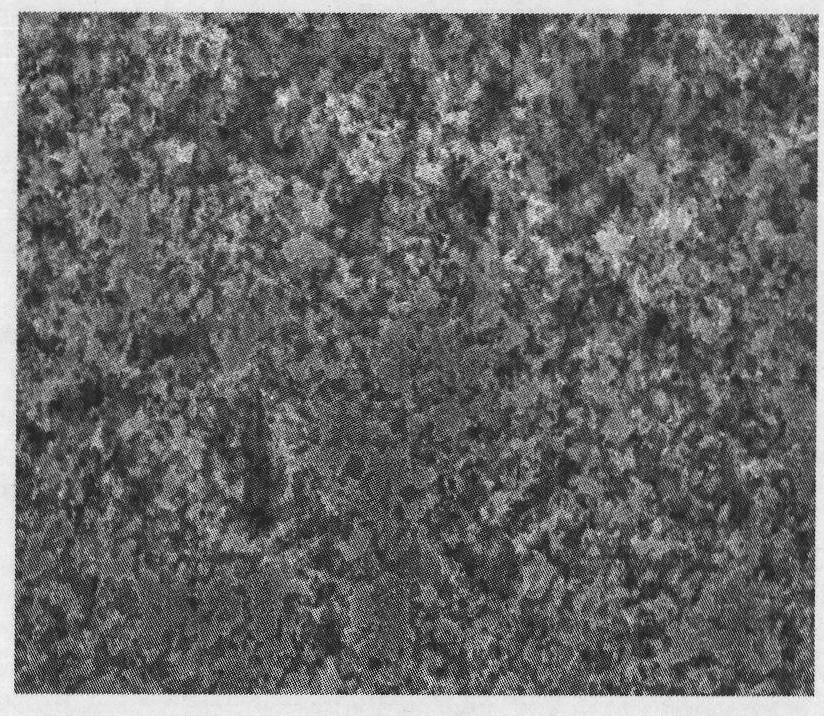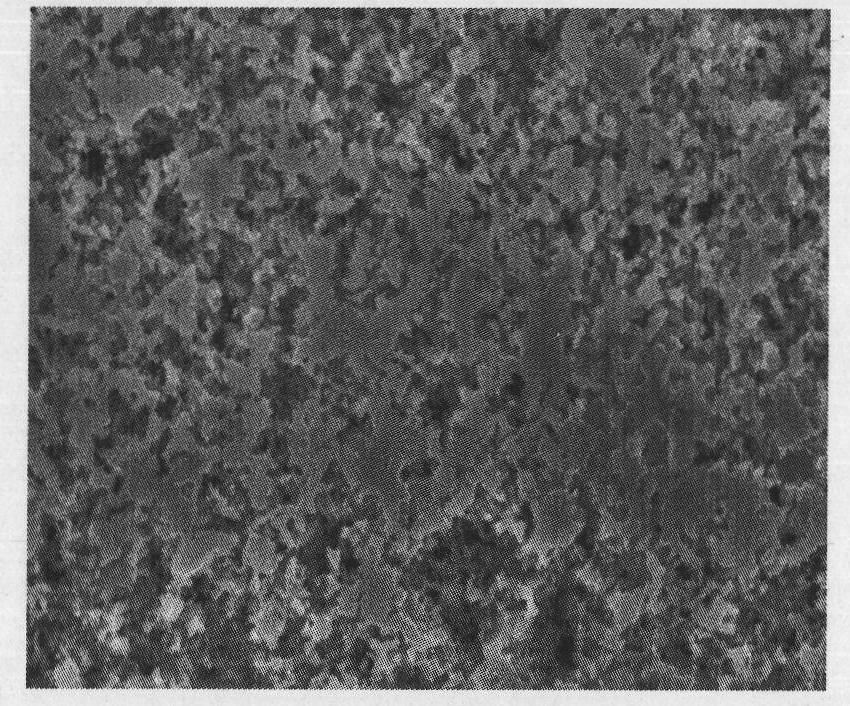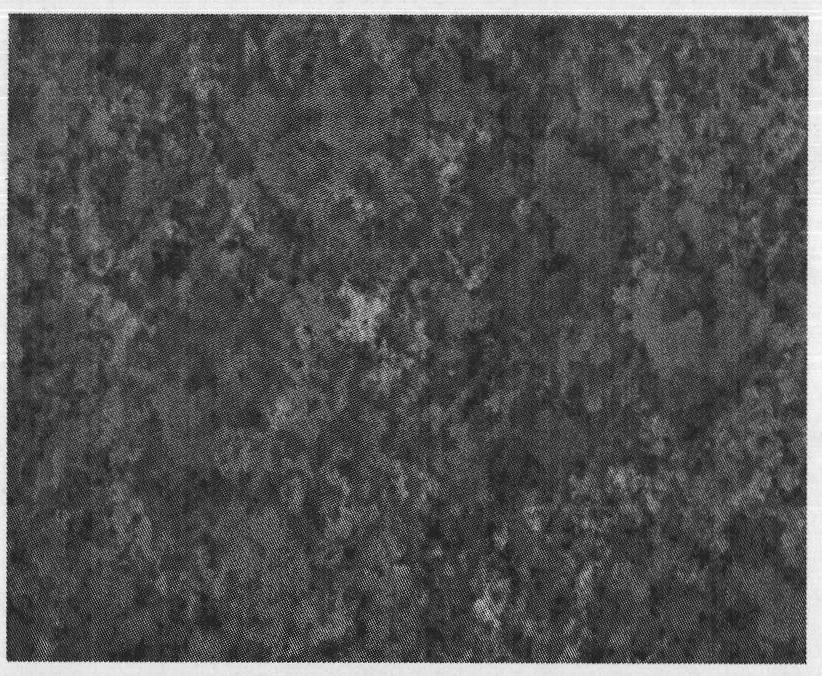Preparation method of Al2O3-TiO2 composite membrane
A technology of al2o3-tio2, 1.al2o3-tio2, applied in the field of composite film, can solve the complex problems of corroding the surface of aluminum foil, and achieve the effects of avoiding phase transition and embrittlement, enhancing bonding force and simple equipment
- Summary
- Abstract
- Description
- Claims
- Application Information
AI Technical Summary
Problems solved by technology
Method used
Image
Examples
Embodiment 1
[0039] Embodiment 1: add 30ml acetone in dry Erlenmeyer flask, then add 3 grains of I 2 (about 0.075g), then add 1.0ml of water three times, and stir for more than 40min. Then add 150ml isopropanol, add 0.541g nanometer rutile TiO after continuing to stir for 30min 2 powder. After stirring evenly, add 5ml of polyethylene glycol, then stir for more than 24h to make it uniformly dispersed, and finally ultrasonicate for 20min under the ultrasonic power of 99W to obtain a stable electrophoretic suspension. Electrophoretic deposition was performed at a voltage of 12V, and the deposition time was 8 minutes. After the foil is naturally dried at room temperature, it is heat-treated at 500°C for 10 minutes.
[0040] Use corrosion foil for low-voltage aluminum electrolytic capacitors (apparent thickness 100μm), and manually cut 50mm×10mm handle samples into 150g / L ammonium adipate solution for chemical conversion treatment, and also for samples without any pretreatment Corroded foils ...
Embodiment 2
[0041] Embodiment 2: add 30ml acetone in dry Erlenmeyer flask, then add 5 grains of I 2 (about 0.125g), then add 1.0ml of water three times, and stir for more than 40min. Then add 140ml of isopropanol, continue stirring for 30min and add 0.0540g of nanometer rutile TiO 2 powder. After stirring evenly, add 4ml of polyethylene glycol, then stir for more than 24h to make it uniformly dispersed, and finally ultrasonicate for 20min under the ultrasonic power of 99W to obtain a stable electrophoretic suspension. Electrophoretic deposition was performed at a voltage of 18V, and the deposition time was 3 minutes. After the foil is naturally dried at room temperature, it is heat-treated at 500°C for 10 minutes.
[0042] Use corrosion foil for low-voltage aluminum electrolytic capacitors (apparent thickness 100μm), and manually cut 50mm×10mm handle samples into 150g / L ammonium adipate solution for chemical conversion treatment, and also for samples without any pretreatment Corroded ...
Embodiment 3
[0043] Embodiment 3: add 30ml acetone in dry Erlenmeyer flask, then add 3 grains of I 2 (about 0.075g), then add 5.0ml of water three times, and stir for more than 40min. Then add 150ml of isopropanol, continue stirring for 30min and add 0.0469g of nanometer rutile TiO 2 powder. After stirring evenly, add 2ml of polyethylene glycol, then stir for more than 24h to make it uniformly dispersed, and finally ultrasonicate for 20min at 99W ultrasonic power to obtain a stable electrophoretic suspension. Electrophoretic deposition was performed at a voltage of 26V, and the deposition time was 4min. After the foil is naturally dried at room temperature, it is heat-treated at 500°C for 10 minutes.
[0044] Use corrosion foil for low-voltage aluminum electrolytic capacitors (apparent thickness 100μm), and manually cut 50mm×10mm handle samples into 150g / L ammonium adipate solution for chemical conversion treatment, and also for samples without any pretreatment Corroded foils were chem...
PUM
 Login to View More
Login to View More Abstract
Description
Claims
Application Information
 Login to View More
Login to View More - R&D
- Intellectual Property
- Life Sciences
- Materials
- Tech Scout
- Unparalleled Data Quality
- Higher Quality Content
- 60% Fewer Hallucinations
Browse by: Latest US Patents, China's latest patents, Technical Efficacy Thesaurus, Application Domain, Technology Topic, Popular Technical Reports.
© 2025 PatSnap. All rights reserved.Legal|Privacy policy|Modern Slavery Act Transparency Statement|Sitemap|About US| Contact US: help@patsnap.com



